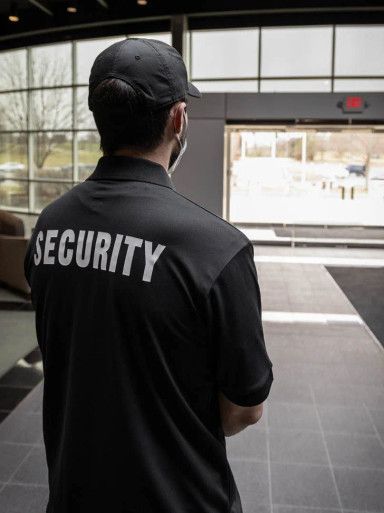
Choosing the Right Materials for Security Uniforms in Saudi Climate
Security personnel in Saudi Arabia operate in one of the world's most challenging climates, where temperatures can exceed 50°C (122°F) and humidity varies dramatically across regions. Selecting appropriate materials for security uniforms is critical for maintaining operational effectiveness, professional appearance, and personnel well-being in these extreme conditions.
Understanding Saudi Arabia's Extreme Climate Challenges
Saudi Arabia's diverse climate zones present unique challenges for security uniform materials:
- Desert Interior: Extreme heat (45-50°C+), low humidity, significant day-night temperature variations
- Coastal Regions: High humidity (60-80%), moderate temperatures, salt air exposure
- Northern Highlands: Seasonal temperature variations, occasional precipitation, wind exposure
- Urban Heat Islands: Elevated temperatures in cities due to concrete and asphalt surfaces
- Dust and Sand: Frequent sandstorms and airborne particles affecting fabric performance
Saudi Climate Impact on Security Operations
Critical Material Properties for Saudi Security Uniforms
Effective security uniform materials must address multiple performance requirements simultaneously:
Thermal Management and Breathability
- Moisture-Wicking Technology: Advanced fiber structures that transport perspiration away from skin
- Air Permeability: Fabric construction allowing air circulation while maintaining opacity
- Thermal Regulation: Materials that facilitate heat dissipation without compromising protection
- Quick-Dry Properties: Rapid moisture evaporation preventing heat buildup and discomfort
- Cooling Treatments: Chemical finishes that enhance cooling sensation during wear
Durability and Performance
- Abrasion Resistance: Withstanding friction from equipment, vehicles, and daily activities
- Tear Strength: Resistance to ripping under stress or contact with sharp objects
- Color Fastness: Maintaining professional appearance despite UV exposure and washing
- Dimensional Stability: Preventing shrinkage and shape distortion over time
- Chemical Resistance: Protection against cleaning agents and environmental contaminants
Professional Appearance Standards
- Wrinkle Resistance: Maintaining crisp appearance throughout extended shifts
- Shape Retention: Preserving tailored fit despite repeated wear and washing
- Soil Release: Easy removal of stains and environmental soiling
- Professional Drape: Appropriate fabric weight and structure for authoritative appearance
- Color Consistency: Uniform color matching across different fabric components
Advanced Fabric Technologies for Extreme Conditions
Modern textile engineering has developed sophisticated solutions for extreme climate security applications:
High-Performance Synthetic Blends
- Polyester-Cotton Composites: Optimized blends (65/35 or 60/40) balancing comfort and durability
- Microfiber Technology: Ultra-fine fibers creating superior moisture management
- Bi-Component Fibers: Core-sheath construction optimizing different properties
- Hollow Fiber Systems: Increased surface area for enhanced cooling and moisture transport
- Modified Polyester: Chemically altered fibers with enhanced comfort properties
Specialized Cooling Technologies
- Phase Change Materials (PCM): Micro-encapsulated materials absorbing and releasing heat
- Jade-Infused Fibers: Natural cooling properties integrated into synthetic fabrics
- Cooling Gel Integration: Embedded cooling elements for extreme heat conditions
- Reflective Treatments: Coatings that reflect heat while maintaining professional appearance
- Evaporative Cooling: Fabrics designed to enhance natural cooling through evaporation
Material Selection by Security Role and Environment
Different security assignments require tailored material approaches:
Outdoor Patrol and Perimeter Security
- Maximum UV Protection: UPF 50+ rated fabrics blocking harmful radiation
- Enhanced Breathability: Lightweight, highly permeable materials for extended outdoor exposure
- Reflective Elements: Integrated visibility features for safety and identification
- Dust Resistance: Tightly woven fabrics preventing particle penetration
- Wind Resistance: Materials maintaining comfort in desert wind conditions
Indoor and Facility Security
- Climate Transition Capability: Materials adapting to temperature changes between environments
- Professional Appearance: Structured fabrics maintaining formal security presence
- Stain Resistance: Protection against spills and environmental contamination
- Comfort in AC Environments: Materials preventing overcooling in air-conditioned spaces
- Static Control: Anti-static properties for electronic security equipment compatibility
Event and Crowd Control Security
- High Mobility Fabrics: Stretch materials allowing unrestricted movement
- Reinforced Stress Points: Enhanced durability at high-wear areas
- Moisture Management: Superior wicking for high-activity situations
- Professional Authority: Materials projecting confidence and control
- Easy Care: Simplified maintenance for frequent uniform changes
Seasonal Material Considerations
Saudi Arabia's seasonal variations require adaptive material strategies:
Summer Operations (April-October)
- Lightweight Construction: 120-160 GSM fabrics minimizing heat retention
- Maximum Ventilation: Open weave structures and ventilation panels
- Cooling Treatments: Chemical finishes providing cooling sensation
- Light Colors: Heat-reflective colors where operationally appropriate
- Minimal Layering: Single-layer construction reducing bulk and heat
Winter Operations (November-March)
- Layering Systems: Modular components for temperature adaptation
- Wind Resistance: Tightly woven outer layers blocking cold air
- Insulation Options: Removable thermal layers for northern regions
- Water Resistance: Protection against occasional precipitation
- Thermal Regulation: Materials maintaining comfort across temperature ranges
Color and Visual Impact Considerations
Material selection must balance thermal performance with professional appearance requirements:
Heat Management vs. Authority Projection
- Dark Color Cooling: Advanced fabrics allowing dark colors without heat penalty
- Reflective Integration: Subtle heat-reflecting treatments maintaining professional appearance
- Strategic Color Placement: Light colors in high-heat areas, dark colors for visibility
- Psychological Impact: Color choices affecting public perception and deterrence
- Cultural Sensitivity: Appropriate colors for Saudi cultural context
Maintenance and Longevity in Extreme Conditions
Material selection must consider long-term performance under challenging conditions:
Washing and Care Requirements
- Industrial Laundering: Compatibility with high-temperature commercial washing
- Chemical Resistance: Withstanding strong detergents and sanitizers
- Frequent Washing: Maintaining properties despite increased cleaning frequency
- Quick Turnaround: Fast-drying materials reducing inventory requirements
- Professional Finishing: Materials maintaining crisp appearance with minimal ironing
Environmental Degradation Resistance
- UV Stability: Preventing fabric breakdown from intense sunlight exposure
- Salt Air Resistance: Protection against coastal corrosion effects
- Sand Abrasion: Resistance to particle-induced wear
- Temperature Cycling: Withstanding extreme temperature variations
- Humidity Resistance: Preventing mold and mildew in humid conditions
Cost-Benefit Analysis of Premium Materials
Investment in appropriate materials delivers measurable returns:
- Extended Garment Life: 40-60% longer service life with quality materials
- Reduced Replacement Costs: Lower total cost of ownership despite higher initial investment
- Improved Performance: Enhanced security effectiveness through comfort and mobility
- Professional Image: Maintained appearance supporting organizational reputation
- Staff Satisfaction: Improved morale and retention through comfort
Future Innovations in Security Uniform Materials
Emerging technologies promise even greater performance in extreme climates:
- Smart Textiles: Fabrics with integrated sensors monitoring environmental conditions
- Adaptive Materials: Fabrics that automatically adjust properties based on conditions
- Nano-Coatings: Molecular-level treatments providing multiple performance benefits
- Bio-Based Cooling: Natural cooling compounds integrated into synthetic fabrics
- Self-Cleaning Materials: Photocatalytic fabrics breaking down contaminants
Implementation Guidelines for Security Organizations
Successful material selection requires systematic evaluation and implementation:
Testing and Validation
- Climate Chamber Testing: Laboratory validation under controlled extreme conditions
- Field Trials: Real-world testing during peak summer conditions
- User Feedback: Comprehensive evaluation by security personnel
- Performance Monitoring: Tracking comfort, durability, and appearance over time
- Comparative Analysis: Evaluating multiple material options simultaneously
Conclusion
Selecting appropriate materials for security uniforms in Saudi Arabia's extreme climate is a critical decision affecting operational effectiveness, professional image, and personnel well-being. The investment in advanced, climate-appropriate materials pays dividends through improved performance, extended garment life, and enhanced security operations.
As climate conditions continue to intensify and security requirements evolve, organizations that prioritize material quality and performance will maintain competitive advantages while ensuring their personnel can operate effectively in any conditions. The right material choices represent an investment in both operational excellence and human capital protection.
About the Author

Major Saad Al-Harbi (Ret.)
Major Saad Al-Harbi is a retired security operations specialist with over 22 years of experience in Saudi Arabian security services. He specializes in uniform standards and material performance in extreme climate conditions, having developed procurement guidelines for multiple security organizations across the Kingdom.
Optimize Your Security Uniform Materials
Discover how the right material selection can enhance your security operations while ensuring personnel comfort in Saudi Arabia's challenging climate. Our security uniform specialists provide expert guidance on climate-appropriate materials.
Consult Our Experts